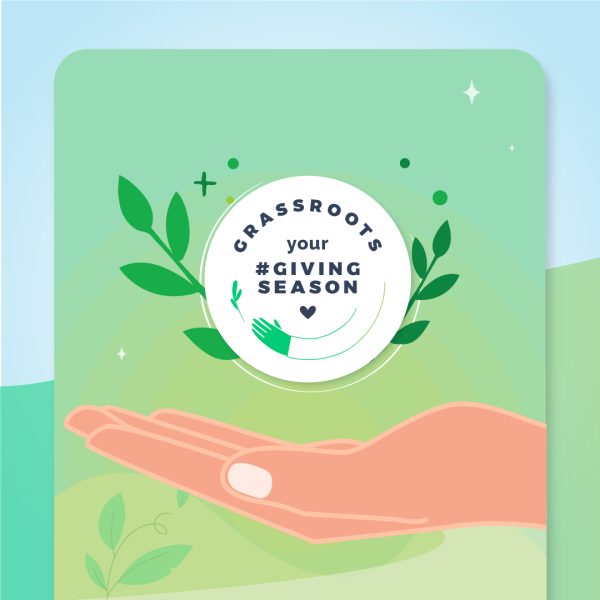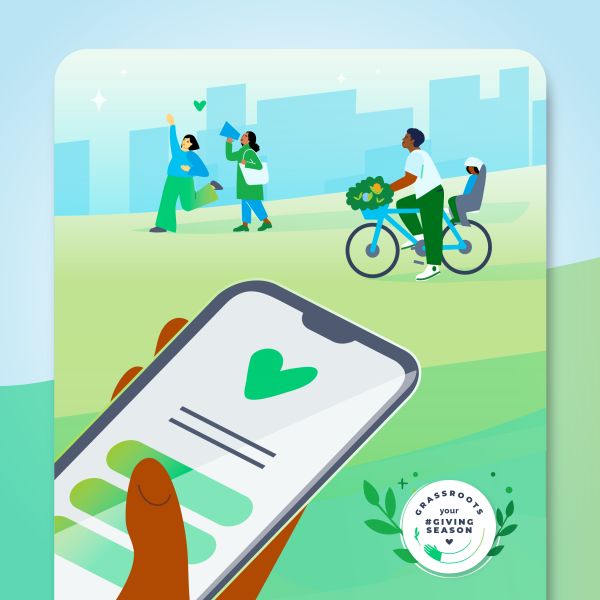This is a guest post written by Janice Chan, who often writes for our friends at Wethos over at The Wethos Collective blog. In over a decade in the nonprofit sector, Janice has written fundraising appeals and grant proposals, led social media outreach, managed volunteers, executed rollout plans, managed donor and program databases, and learned the hard way that changing to a new website host means you’d better make sure that donation form still works!
When you don’t have the resources of a large organization behind you, being creative and adapting quickly is even more critical to making the most of what you have. Good news is that technology keeps making it easier to fail fast and pivot quickly without risking huge investments of time or money. Regardless of where your organization is in terms of technological maturity (or how aligned your use of technology is with your mission), there are strategies you can implement at any stage.
One: Choose platforms that provide a solid start.
If you want to leverage technology creatively, choose an online fundraising platform that provides a solid default along with the ability to customize the look and feel on your own. What does this look like for online fundraising? It means the product is designed with thoughtful consideration for the defaults — both how they support your mission-driven organization and a delightful donor experience.
Most of the time, we don’t give a ton of consideration to our defaults. Like when we reach out to our social networks (and only our social networks) when we need to staff up for a project and miss out on great talent who never knew there was an opportunity.
So take time when choosing a platform because that will be your launch pad. As a nonprofit organization, particularly if you’re a small to mid-sized organization, it is probably important that…
-
Your systems can talk to each other so you can work efficiently.
-
You have control over a donor’s giving experience and your branding.
-
You can customize, manage, and maintain this without having a full IT team in-house.
-
You can test and evaluate your efforts.
-
And, if you don’t have the time to, you know the system was designed based on rigorous testing of what is most effective.
Even if you are not looking for a new system right now, it doesn’t mean that you can’t look for new opportunities to optimize your current platforms or try new approaches.
Companies release updates and enhance functionality all the time. Even if you unsubscribed from the product updates, your vendor probably has a blog where you can check out any helpful new features you might have missed and get ideas for using them. Maybe you can even reach out to the vendor’s team and discuss what current features could help you accomplish X better! Or, if you’re looking to strategize across multiple channels (and potentially multiple platforms or systems), consider if it’s worth brainstorming with an outside team of strategy and design experts to figure out how to leverage them together to advance your mission.
Two: Test, test, test.
You know what they say about assumptions. So, how do you know that something is a terrible idea? Okay, maybe some you can recognize right as they exit your mouth, but you still need to throw some spaghetti at the wall before you can tell what sticks.
Technology makes it easier to know what’s working and what’s not. Make use of tracking, reference codes, or features that support A/B testing. If you’re wondering what A/B testing is, it is a basic science experiment: take two similar groups of people; give one group version A and the second group version B. Ideally, there would only be one difference between versions A and B – otherwise it gets very difficult to tell which difference is leading to different results (if they are different).
Platforms like AB Charities make it really easy to test different form titles, blurbs, brandings, videos, and more. However, you can test in any channel. Maybe you’re an elephant sanctuary and you want to see whether you get more clicks on a donation link via social media when you share photos vs. videos. While some platforms may allow you to set up different referral links, you can also compare the stats for the different kinds of posts. You’ll want to know which version they clicked on and you’ll need a way to measure the result (e.g. clicking a link, shares, etc.) depending on what outcome you’re hoping to achieve.
How do you decide what to test?
If data isn’t one of your love languages, sometimes it’s difficult to know where to start. But you know what? Using data to make decisions is something you’re already doing in your daily life. Ever looked at the fuel gauge on your car before getting on the highway and pulled over at the nearest gas station? Congratulations! You’ve made a data-informed decision!
Start with knowing what you would do differently. If one version performs better, what will you keep doing? What would you adjust or stop doing? If it’s not something you could or would change, then find something else to test!
Visualize your data for faster decision-making. Whether your system has dashboards, or you’re making a quick and simple Excel chart, you want to be able to look at your data and immediately know whether action is needed or if you should keep doing what you’re doing because it’s headed in the right direction.
Make adjustments based on what you learn. Dashboards are super useful for checking in to see if you need to change course, but only if you actually make those adjustments. If you’re wondering how you’ll do this on top of everything your team already does, consider adding some temporary capacity. Just as technology allows you to test and pivot quickly without a major investment, bringing on a freelance team allows you to benefit from the insights of specialists without having to add a permanent position (or search for a unicorn!) when you’re trying out new things.
Start small. Start light. Just start. It will be easier to keep the testing and learning and experimenting momentum going once you’ve gotten started and it becomes part of the way you do things.
Three: Remember that it is about the people.
Just because you haven’t met your donors in person doesn’t mean you can’t build a relationship with them. From the updates and acknowledgements you communicate to using social media to empower your supporters to advocate for your cause online, take advantage of the ways in which technology can help us (and our work) transcend borders.
Try out new or unexpected ways to engage with your supporters (and potential supporters).
-
Try out IGTV, Instagram’s app for longform video. (Use reference codes to track donations from Instagram!)
-
New to video? Here are some ways you can use video to delight your donors.
-
Try embedding videos on your contribution forms. (Not sure? Test it!)
-
Pick up the phone. Yes, this is old technology, but I recently received a thank you call from a nonprofit after my first (online) donation. It wasn’t a prelude to another ask – they simply thanked me and asked if I had any questions. I have given far more to other nonprofits and this was the first time I’d ever gotten a thank you call. Using new technology is great, but using old technology in unexpected ways can make your organization stand out.
-
Speaking of phones, and given that we’re all spending a lot more time on mobile devices, what about text messaging (SMS)?
Grow your network and deepen your connection with current donors.
-
Your supporters are proud to support you! Make it easy for them to spread the word with social share graphics.
-
Speaking of empowering your donors to share the amazing work you’re doing, have you tried peer to peer fundraising yet?
Customize your appeals for different audiences so that they have a great experience.
-
You probably have different versions of thank you letters based on how the gift came in or what it was for, right? If you have very different types of fundraising campaigns, or very varied types of supporters, consider creating different donation forms specific to each audience or appeal for a cohesive experience.
-
Provide more options when people sign up for your email lists. Giving your supporters more control over the content they receive means they’re more likely to hear about what they’re already interested in, and you can better tailor your emails.
Take advantage of viral moments and hot topics.
-
Whether it’s the next ice bucket challenge or current events that suddenly make your work top of mind, you’ll want to be able to take advantage of it. In addition to creating a topical donation form, consider setting up a landing page for new website visitors.
-
Consider whether to add ads (promoted posts on social media, Google AdWords, etc.) to the mix.
And for as much as we’ve talked about people being donors, don’t forget about other people! This includes volunteers who might be able to help you identify great stories to share, non-development colleagues who might have a new idea for you to test out, vendors who want to support your organization with even better tools, or a platform like Wethos, which will match you with a freelance team best suited to help your nonprofit strategize and think creatively about testing ideas or executing what you’ve already learned by leveraging the latest technology.
Just as the future of fundraising relies on getting everyone aboard, the future of work means finding a way to grow your team’s capacity sustainably.
This post was written for AB Charities in partnership with Wethos and also appears on The Wethos Collective blog.





